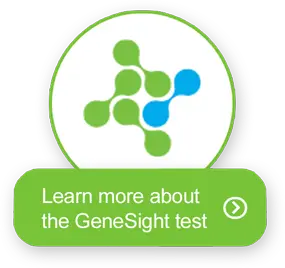Diagnosing depression in geriatric patients comes with a specific set of challenges.
“Older adults are often misdiagnosed and undertreated,” according to the Centers for Disease Control and Prevention’s (CDC) website. “Healthcare providers may mistake an older adult’s symptoms of depression as just a natural reaction to illness or the life changes that may occur as we age, and therefore not see the depression as something to be treated.”
One possible reason may be that somatic symptoms of depression common among younger people – such as weight loss, sleep disturbances, and pessimism about the future – may be related to aging, but not necessarily major depressive disorder, in patients aged 65 years or older, according to a study published in Aging and Mental Health.
A tool clinicians have at their disposal is the Geriatric Depression Scale (GDS). The GDS considers the differences between how symptoms present in younger and older adults. It may be the first step toward recognizing, diagnosing, and treating elderly patients.
What is the Geriatric Depression Scale?

Based on guidance from clinicians and researchers in the geriatric field, 30 questions were included to form the GDS (GDS-30). In 1986, Sheikh and Yesavage presented a shorter, 15-question version of the GDS (GDS-15) that is considered useful for those easily fatigued or limited in ability to concentrate for long periods.
The questions focus on:
- Mood– “Do you feel happy most of the time?” or “Do you often feel helpless?”
- Participation in activities– “Have you dropped many of your activities and interests?”
- Outlook on life– “Do you feel that your situation is hopeless?” or “Do you think that most people are better off than you are?”
- Concern about cognitive abilities– “Do you feel that you have more problems with memory than most?”
According to an article published in the International Journal of Geriatric Psychiatry, the GDS proved useful as a screening tool for both major and minor depression in older adults living in nursing homes with no cognitive impairment as well as with those with mild to moderate cognitive impairment.
Is the Geriatric Depression Scale Reliable?

According to the journal, “GDS 15 had pooled sensitivity and specificity of 86% and 79% with higher diagnostic accuracy (AUC = 0.90). GDS 10 had pooled sensitivity and specificity of 87% and 75% with AUC = 0.83. Our study found GDS 4 to have sensitivity of 74% with specificity of 71%.”
The authors concluded that all forms of the GDS were able to detect both the presence of depression (sensitivity) and non-presence of depression (specificity).
How to Access and Administer the Geriatric Depression Scale
Available in the public domain, the GDS is free to use and easy to administer and score.
The Stanford University Aging Clinical Research Center (where GDS developer Jerome Yesavage is a director), maintains a webpage which provides access to the short- and long-form original English language versions of the GDS. It includes versions of the scale in 40 different languages and provides information about scoring, basic references, and mobile applications that have been developed.
Administering the 15-question test usually takes between 5-7 minutes to complete according to a video published in the American Journal of Nursing. The GDS can be used to screen for baseline depressive symptoms and can serve as a tool for clinicians to use if further assessments are needed.
In scoring the GDS, the healthcare provider would give 1 point for each answer that indicates depression. If a person scores greater than 5 on the 15-question assessment, it may indicate the presence of depression and help clinicians decide whether further assessment is needed.
For more information about depression treatment in the geriatric population, visit the GeneSight blog.
Our articles are for informational purposes only and are reviewed by our Medical Information team, which includes PharmDs, MDs, and PhDs. Do not make any changes to your current medications or dosing without consulting your healthcare provider.
The GeneSight test must be ordered by and used only in consultation with a healthcare provider who can prescribe medications. As with all genetic tests, the GeneSight test results have limitations and do not constitute medical advice. The test results are designed to be just one part of a larger, complete patient assessment, which would include proper diagnosis and consideration of your medical history, other medications you may be taking, your family history, and other factors.
If you are a healthcare provider and interested in learning more about the GeneSight test, please contact us at 855.891.9415. If you are a patient, please talk with your doctor to see if the GeneSight test may be helpful.







